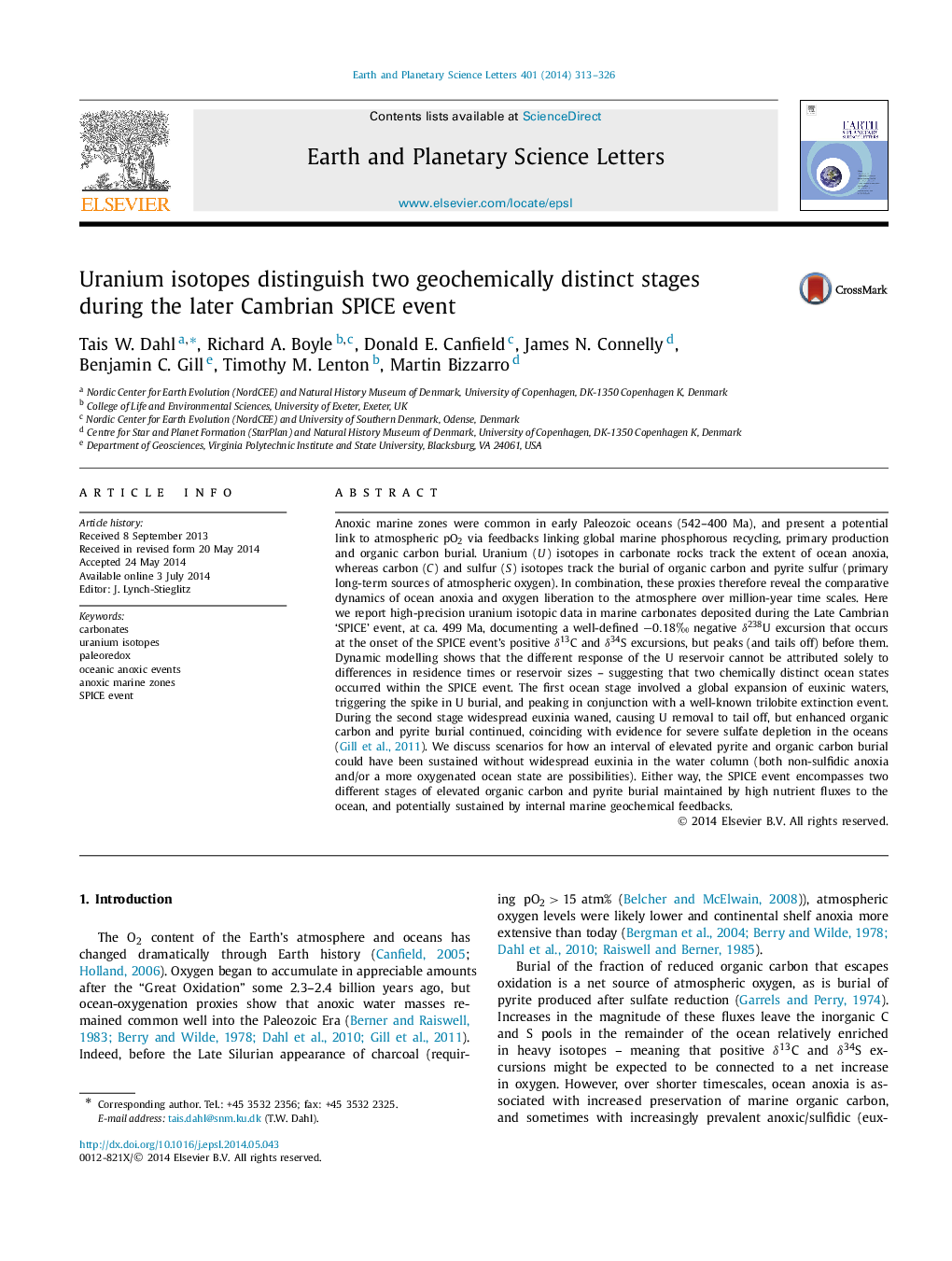| کد مقاله | کد نشریه | سال انتشار | مقاله انگلیسی | نسخه تمام متن |
|---|---|---|---|---|
| 6429215 | 1634755 | 2014 | 14 صفحه PDF | دانلود رایگان |

- We report U isotope data from marine carbonates of the Late Cambrian 'SPICE' event.
- Results document a â0.18â°Î´238U excursion indicative of expanding ocean anoxia.
- The 238U excursion occurs at the onset of positive δ13C and δ34S excursions.
- Dynamic models show how these signals reflect two chemically distinct ocean states.
- This constrains the comparative dynamics of ocean anoxia and atmospheric O2 liberation.
Anoxic marine zones were common in early Paleozoic oceans (542-400 Ma), and present a potential link to atmospheric pO2 via feedbacks linking global marine phosphorous recycling, primary production and organic carbon burial. Uranium (U) isotopes in carbonate rocks track the extent of ocean anoxia, whereas carbon (C) and sulfur (S) isotopes track the burial of organic carbon and pyrite sulfur (primary long-term sources of atmospheric oxygen). In combination, these proxies therefore reveal the comparative dynamics of ocean anoxia and oxygen liberation to the atmosphere over million-year time scales. Here we report high-precision uranium isotopic data in marine carbonates deposited during the Late Cambrian 'SPICE' event, at ca. 499 Ma, documenting a well-defined â0.18â° negative δ238U excursion that occurs at the onset of the SPICE event's positive δ13C and δ34S excursions, but peaks (and tails off) before them. Dynamic modelling shows that the different response of the U reservoir cannot be attributed solely to differences in residence times or reservoir sizes - suggesting that two chemically distinct ocean states occurred within the SPICE event. The first ocean stage involved a global expansion of euxinic waters, triggering the spike in U burial, and peaking in conjunction with a well-known trilobite extinction event. During the second stage widespread euxinia waned, causing U removal to tail off, but enhanced organic carbon and pyrite burial continued, coinciding with evidence for severe sulfate depletion in the oceans (Gill et al., 2011). We discuss scenarios for how an interval of elevated pyrite and organic carbon burial could have been sustained without widespread euxinia in the water column (both non-sulfidic anoxia and/or a more oxygenated ocean state are possibilities). Either way, the SPICE event encompasses two different stages of elevated organic carbon and pyrite burial maintained by high nutrient fluxes to the ocean, and potentially sustained by internal marine geochemical feedbacks.
Journal: Earth and Planetary Science Letters - Volume 401, 1 September 2014, Pages 313-326